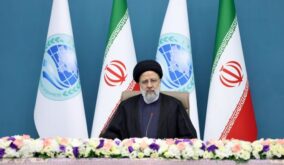CHRI – New Fact Sheet Highlights Women’s Issues for Journalists and Researchers
January 6, 2020—Women in Iran are among the Middle East’s most educated and accomplished, yet they continue to face severe rights violations and discrimination in all walks of life, in both law and practice.
In a new Women’s Rights Fact Sheet published by the Center for Human Rights in Iran (CHRI), the nature and extent of these abuses are highlighted in a concise, accessible format for researchers, journalists and policymakers.
Download the CHRI’s Women’s Rights Fact Sheet Here
Among the points highlighted:
- The lack of legal protections against violence—in particular, domestic violence, sexual violence and child marriage—is one of the major issues facing women and girl children in Iran. For example:
- A majority of rural Iranian women experience domestic violence—yet there are no orders of protection and shelters are absent in a third of the country. And, if a wife leaves the marital home, she forfeits financial maintenance.
- Girls can be married off at age 13—younger with a father’s and judge’s permission, and the much-heralded new child protection law fails to protect girls from sexual abuse.
- Women and girls face starkly unequal laws regarding family and personal status as well as discriminatory criminal laws. For example:
- Arduous burdens of proof, limited definitions of rape and criminalization of sex outside marriage all prevent women from reporting sexual assaults.
- Only men can escape flogging and death sentences for adultery by claiming “temporary marriages.”
- Women have highly limited and unequal rights to divorce and lose custody of their children at age 7.
- Women face workplace discrimination, exclusions from political life and restrictions in the public sphere in such areas as dress, sport and performance. For example:
- Peaceful public protest of forced hijab carries a 1-10-year prison sentence.
- Women face arbitrary mass disqualifications when they try to run for parliament and still cannot be judges.
- Women can be prevented from employment by their husbands and Iran has one of the lowest economic participation rates for women in the world.
- The peaceful advocacy of women’s rights continues to be criminalized, with women’s rights activists and lawyers behind bars serving harsh sentences. For example:
- Lawyer Nasrin Sotoudeh was issued a 38-year prison sentence for defending forced hijab protestors.
The fact sheet also notes areas in which grassroots women’s rights campaigns in Iran are actively taking on issues such as sexual harassment, child marriage and marriage contracts.
The Islamic Republic often cites its accomplishments in women’s education and health. Indeed, 60% of Iran’s university graduates are now women. Yet in the World Economic Forum’s 2020 Global Gender Gap, Iran scored near the bottom, ranking 148th out of 153 countries. Among Middle East countries, who share a poor record on women’s rights, Iran still scored 16th out of 19 countries.
Download the CHRI’s Women’s Rights Fact Sheet here.
 Shabtabnews In this dark night, I have lost my way – Arise from a corner, oh you the star of guidance.
Shabtabnews In this dark night, I have lost my way – Arise from a corner, oh you the star of guidance.


